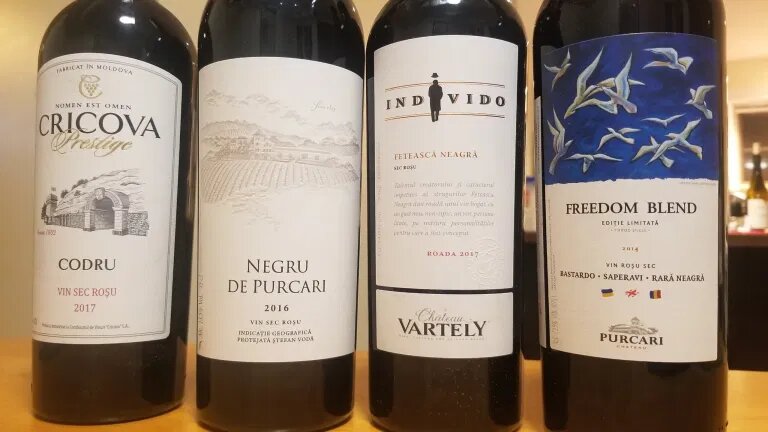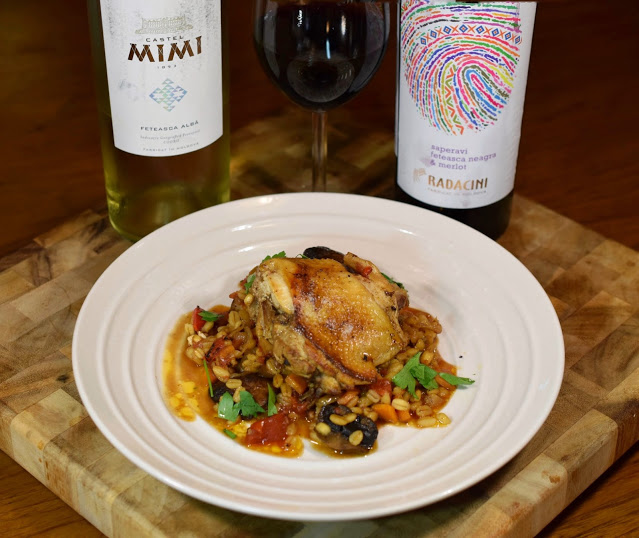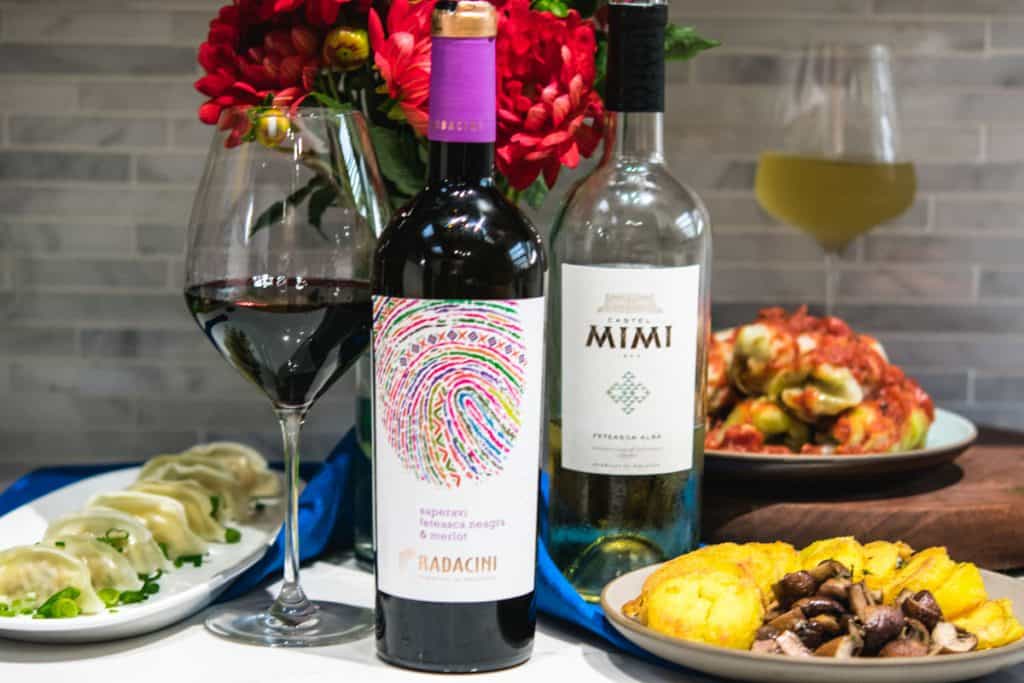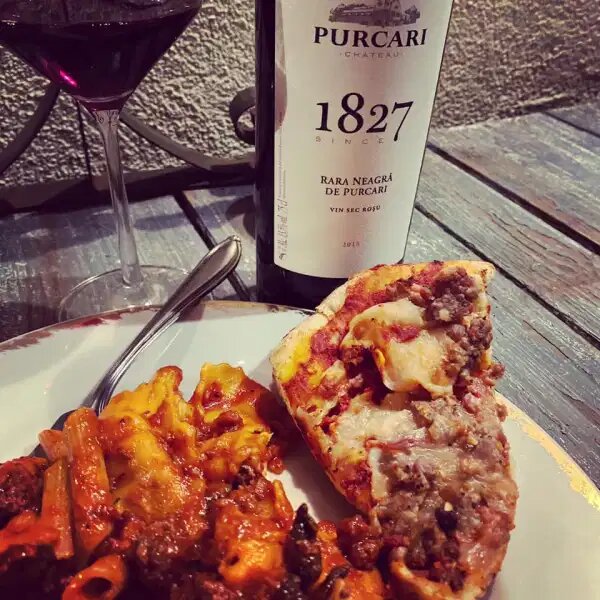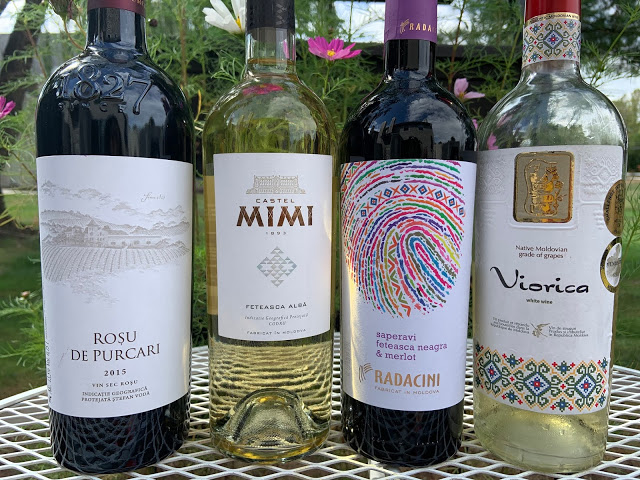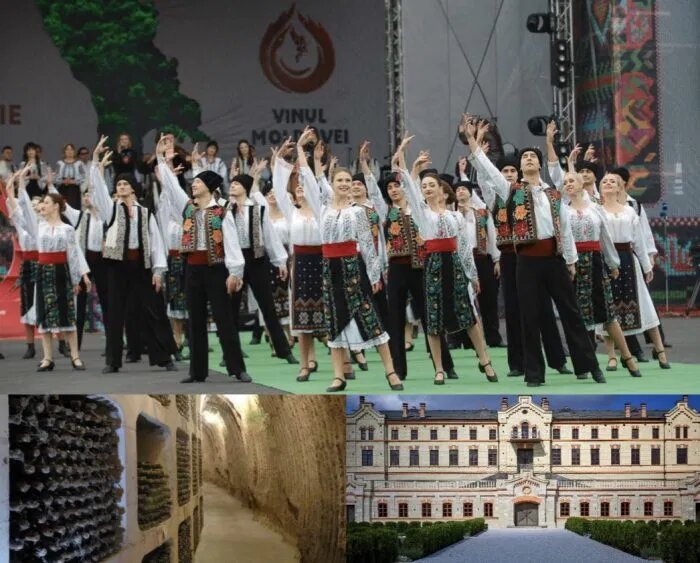Have you ever tried something completely new, then been absolutely astounded you didn’t know about it beforehand? That was my experience discovering Moldovan wines this week. Heck, I honestly wasn’t even sure where Moldova was before writing this post. But trust me, it is now at the top of my list for Eastern European wine travel. Speaking of travel, this post is part of a new monthly wine blogger gathering precisely on the topic of #worldwinetravel. This month is generously sponsored by Wine of Moldova and VinConnexion in celebration of the country’s National Wine Day on October 3 and 4 (as always, opinions are my own). Keep reading to learn all about this well-established wine region and its amazing wines.

Moldova 101
Geography
If, like me, you know nothing about Moldova, let’s start with some maps.


Moldova is a small landlocked country sandwiched between Ukraine and Romania. Its population is only 3.5 million people, and its capital city is called Chișinău. The country is on the same latitude as Bourgogne in France, and is technically further north than Ottawa (who knew!). Its climate is tempered by the nearby Black Sea.
A (very) brief history
Historically, the Principality of Moldavia was ceded to the Russian Empire in the early 1800s by the Ottoman Empire, when it became known as Bessarabia. Over the course of the next two hundred or so years, it became independent, then became part of Romania, then was annexed by the Soviet Union, before finally declaring independence and becoming the Republic of Moldova in 1991 after the fall of the Iron curtain.
Language
Since I am a language nerd, you know I have to mention this. When I first opened these wines, I couldn’t figure out why I could read the labels, even though they weren’t in English. Wasn’t Moldova historically part of Russia? Shouldn’t it be written in an alphabet I don’t know? As it turns out, in its 1991 Declaration of Independence, Moldova made Romanian its official language. Some of you may already know that Romanian is actually a Romance language (i.e. shares linguistic roots with French, Spanish, Italian and Portuguese) so it uses the Latin alphabet (i.e. A, B, C) rather than Russian Cyrillic script. Since I speak both French and Spanish, it stands to reason that I could read the bottles, seeing as Romanian is essentially their linguistic cousin. The language is sometimes also referred to as Moldovan, which is essentially a dialect of Romanian.

Extra-linguistic side note: if I can read a bottle of wine in Romanian, why oh why can’t I understand the lyrics of this most famous of Romanian songs?
Moldovan wine
Winemaking practices in Moldova date back to 3000 BC (!!) so it stands to reason that this tradition is deeply entrenched in Moldovan culture and folklore. There are a shocking 128,000 ha of vines planted throughout this small nation, making it the country with the highest density of vineyards in the world, growing over 50 grape varieties. There are three wine regions that are now protected geographic indications: Valul lui Traian, Stefan Voda and Codru (are you taking notes? There’ll be a test at the end ;-).

In the last few decades, Moldovan wine has undergone a massive overhaul to improve quality and modernize practices following the less-than favourable impacts of Soviet rule (cf Gorbachev’s anti-alcohol campaign in the 80s). The results speak for themselves, with Moldovan wines bringing home 187 gold medals at various international competitions in 2018.
European grape varieties make up about 73% of the national breakdown. Of those, 70% are white varieties, and 30% are red. That said, about 55% of exports are of the red variety. There is also a growing importance of indigenous varieties, such as feteasca alba, feteasca regala, feteasca neagra, rara neagra, plavai, etc. Bonus: 14% of wines produced in Moldova are sparkling wines, often made in the traditional method (i.e. the Champagne method).
And now, let’s get wining!
Cricova Prestige Codru 2017

This Cricova was an excellent initiation into Moldovan wines.
Besides being the name of the region where it is grown, Codru also refers to a specific red blend of 75% cabernet sauvignon and 25% merlot, grown in warmer microclimates in this central region known for its white wines.
It is a deep ruby red colour and offers rich aromas of blackberry, rhubarb, raisin, black cherry, plum, leather and tobacco. It’s the kind of wine I could smell all day (is that weird?). When you taste it, you initially get this burst of juiciness, oddly reminiscent of baco noir, followed by flavours of pomegranate, blackberry, cherries, cinnamon, and smokiness. It is medium bodied and smooth, despite being aged on oak for 18 months. There’s a slight pull of tannin, but nothing a big chunk of steak couldn’t take care of. Yes, this is the ultimate pairing for any hearty meal, from a simple burger or sausage to rack of lamb.
Cricova is known as the “Pearl of Moldovan winemaking” and is famous for its 120 kilometres of labyrinthical underground tunnels. This underground city not only home to the winery’s cellars, but also to the national collection of wine. This is definitely now on my list of must-sees.
Château Vartely Individo Feteasca Neagra 2017

Feteasca neagra literally means “black maiden”, due to its black skin, and is the third most planted red grape in the region. This Romanian grape‑that‑could is literally bringing Moldovan wine back to its roots while also putting Moldova on the wine map.
To give you an idea of my very formal tasting notes, this one starts with “OH YUM”. It’s all black fruit, spices and smoke, is nice and juicy, with good, solid structure (i.e. body and tannin). It pairs beautifully with red meats, preferably grilled to match the wine’s smokey flavour. I also just had it with French saucisson and it was a stellar match. I’ll say it again: OH YUM. It would also make an unexpected perfect pairing for Thanksgiving dinner – just saying!
Purcari Freedom Blend 2014

Purcari, located in the village of the same name, is one Moldova’s oldest wineries. It was established in 1827, when Russian Emperor Nicholas I made it the first specialized winery in Bessarabia. It has excelled in reconciling traditional and modern winemaking techniques, installing state-of-the-art technology over the last twenty years.
The Freedom Blend was a special project that began in 2011 to commemorate the 20-year anniversary of Moldova, Ukraine and Georgia’s independence. The blend is made up of an indigenous grape from each country: rara neagra (Moldova), bastardo (Ukraine) and saperavi (Georgia).
This was the oldest wine in the bunch, from 2014. That is why it has a garnet edge in its the deep ruby red colour. This wine needs a bit of time to open up, but then it reveals aromas of rich black fruit, baking spice, leather, and tobacco. On the palate, its tannins are still a bit chewy and it has great acidity, making this a great candidate for cellaring. It is full-bodied, with flavours of cherry, plum, red pepper and smoke. Delicious!
Negru de Purcari 2016

I saved the best for last! Usually I don’t pay attention to gold stickers on wine bottles, but this 2020 Decanter World Wine Award gold‑medal winner cannot be ignored. Made of 70% cabernet sauvignon, 25% saperavi and 5% rara neagra, this ruby red wine is so dark, it’s opaque. The bouquet is gorgeous, with black cherry, violet, fig, and a hint of minerality. On the palate, there is the same dark fruit and floral character, with a hint of dark chocolate and smokey tobacco. This is yet another red meat wine – give those chewy tannins something to work on! It went beautifully with an autumn beef stew. The tannins and acidity also make it perfect for cellaring. So buy the case, and drink one every year to see how it evolves. I’m sure this is one that will only get better with age.
Where to buy?
So, how can we get these wines here in Canada? Moldova is still a little‑known wine region, and our Canadian wine-buying market is relatively small compared to our neighbours to the south, so these wines can be hard to source. My samples came from Celestial Wines and Spirits in Alberta (thank you!!), and a small selection of Moldovan wines are listed at the SAQ in Quebec. In Ontario, I suspect a few may float in and out of Vintages throughout the year. That said, I am told the Athlone Liquor Store will deliver these wines right to your door. For those of you in Quebec, try Vinohora.
Conclusion
At the beginning of this week, I didn’t know where in the world Moldova was, and now I’m obsessed with their wine. If you love full-bodied reds that are a perfect balance of fruit flavours, spice, tannin and acidity, you absolutely must try Moldovan wines. Now I’m itching to try their whites and sparklings! Who wants to split on a case?
Happy wining!
Blog of Melanie from Wining With Mel

